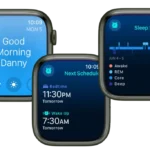If your LaCie hard drive is not recognized by your computer, it can be quite alarming. However, most of the time it is due to connection issues or settings of the drive. Therefore, it is important to go through a series of checks before assuming that the drive is damaged. To begin with, check if the USB cable is properly plugged in and the drive is receiving power. Next, ensure that the drive appears in your computer’s Disk Management system. Sometimes, a drive without a letter won’t show up in File Explorer, so it is necessary to check the Disk Management system.
Many of the problems people face with Lacie drives have to do with the computer’s disk management settings. If the drive isn’t assigned a letter or has a conflict with another drive, it might be invisible despite being present in the system. In such cases, correctly formatting the drive and assigning a new drive letter can often resolve the issue. It is also wise to update drivers and check for any possible conflicts or errors that could prevent the drive from appearing. By following these steps, you can help your LaCie hard drive become visible and accessible again.
Troubleshooting a LaCie Hard Drive Connection
If your LaCie hard drive isn’t showing up on your computer, don’t worry. There are several common problems that are relatively easy to fix. Follow these troubleshooting steps to get your drive recognized and working again.
Check The Basics
Before diving deeper, ensure these basic points are in order:
- Connections: Double-check that your LaCie drive is properly plugged into a power source (if required) and that the data cable is securely connected to both your computer and the drive.
- Drive Power: Desktop drives typically need an external power supply. Verify that it’s switched on and plugged in.
- Try Different Ports/Cables: Try a different USB port or Thunderbolt port (if applicable) on your computer. If possible, swap out the cable for another one to eliminate the possibility of a faulty cable.
Restart Your Computer
Sometimes, a simple restart can resolve temporary glitches that might be preventing your LaCie drive from being recognized. Reboot your computer and see if the drive shows up.
Compatibility and File System
- Operating System Check: Ensure your LaCie hard drive is compatible with your computer’s operating system (Windows or macOS). You can find compatibility information on the product’s packaging or LaCie’s website.
- File System Matters: If you’re switching between Windows and macOS, formatting issues can prevent a drive from showing up. Drives formatted for macOS (HFS+ or APFS) may not be immediately recognizable on Windows, and vice versa (NTFS). Use disk management tools to check the drive’s file system and reformat, if necessary. Caution: Reformatting erases all data on the drive, so back up important files first.

Device Management and Driver Issues
For Windows Users:
- Disk Management: Open Disk Management (Right-click on the Start menu > Disk Management). Look for your LaCie drive. If it’s listed but without a drive letter, right-click and “Assign Drive Letter” to make it visible.
- Device Manager: Type “Device Manager” in the Windows search bar, locate your drive under “Disk Drives.” Right-click and check if it’s enabled. Look for any yellow exclamation marks indicating driver issues. Try updating or reinstalling the drivers for your LaCie drive. You can often find the latest drivers on the LaCie support website.
For macOS Users:
- Disk Utility: Go to Finder > Applications > Utilities > Disk Utility. See if your LaCie drive appears in the list. If it’s there but not mounted, click the “Mount” button.
- System Information: Hold the Option key, click the Apple icon, and select “System Information”. Under the “Hardware” section, look for your LaCie drive within the USB or Thunderbolt sections. If it doesn’t appear, it may be a hardware issue with the drive or connection.
Hardware Issues
- Damaged Port: If you’ve tried different ports and cables, the port on your computer might be damaged. Try the drive on a different computer to isolate the issue.
- Internal Drive Failure: If all other troubleshooting steps fail, there might be a physical problem with your LaCie hard drive. In this case, consider seeking professional data recovery services if you have important data on the drive.
| Troubleshooting Tip | What to Do |
|---|---|
| Check cable connections | Make sure all cables are securely connected |
| Verify that the drive has power | Ensure external power is plugged in and turned on, check for power indicator lights on the drive |
| Try different ports and cables | Swap out cables and ports to isolate issues |
| Restart your computer | A simple restart can resolve temporary glitches |
| Check Disk Management/Disk Utility | See if the drive is visible in your OS drive management tools |
| Update or reinstall drivers | Ensure the drive’s drivers are updated |
| Check for hardware issues | If nothing else works, it may be a hardware problem with the drive or your computer’s ports |
Key Takeaways
- Checking the USB connection and power supply can quickly resolve certain detection issues.
- LaCie hard drives may need a drive letter assigned through Disk Management to appear on the system.
- Update drivers and resolve conflicts to ensure the drive is recognized by the computer.
Troubleshooting Connectivity Issues
When a LaCie hard drive does not show up on your computer, it might be due to connectivity issues. This section walks through steps to ensure your drive connects properly to your system.
Checking USB Ports and Cables
Start by examining the USB port on the computer. Plug the drive into a different USB port to rule out the possibility of a faulty port. If you’re using a USB hub, try connecting the drive directly to the computer instead. It’s also smart to check the USB cable for any signs of damage. If you find any, replacement of the cable might be necessary.
Ensuring Proper Power Supply
Ensure the power adapter is plugged in firmly to both the drive and the power outlet. Power cables can become loose over time. If the hard drive has an external power source, check if it connects well with the power outlet and the drive.
Driver and System Updates
Outdated drivers can lead to connectivity problems. Open Device Manager on Windows or System Information on Mac to check for USB driver updates. Updating the operating system can also solve issues, as new updates often come with fixes for common bugs.
Drive Letter Assignment
Sometimes, Windows does not assign a drive letter to a new device. Use Disk Management found in the Control Panel to assign a new letter. Right-click on the LaCie drive and select ‘Change Drive Letter and Paths’. Follow the prompts to assign a letter if one is not present. This step can help make the drive appear in ‘This PC’ or ‘My Computer’.
Managing Disk and File System Issues
When a LaCie hard drive is not visible on a computer, disk management tools can help troubleshoot issues related to formatting, partitioning, unallocated space, and potential drive corruption. These tools are essential for diagnosing the hard drive and fixing common problems.
Utilizing Disk Management Tools
Disk Management is a system utility in Windows that enables users to view and manage the disk drives installed in their computer. If the LaCie drive does not show up in File Explorer, it might still be visible in Disk Management. Here, one can check the drive’s status, format the drive, or assign a new drive letter if needed.
Formatting and Partitioning the Drive
Formatting a disk erases all the data on it and sets up a file system. For LaCie drives, this might be NTFS, exFAT, or another format that the operating system can recognize. If the hard drive is new or improperly formatted, using the Disk Management tool to format the drive and create a partition is crucial.
Recovering Unallocated Disk Space
Sometimes, a drive will have unallocated space, which means the space is not formatted or part of an existing partition. Disk Management can locate unallocated space on a LaCie external drive and allows users to create a new volume, which will enable the drive to be used for storage.
Addressing Potential Drive Corruption
In cases where LaCie hard drives are corrupted, tools such as Windows’ Error Checking or the Disk Utility’s First Aid on Mac can be used. These utilities scan the drive for issues and attempt to repair them. For severe corruption, a complete format of the drive might be necessary.







